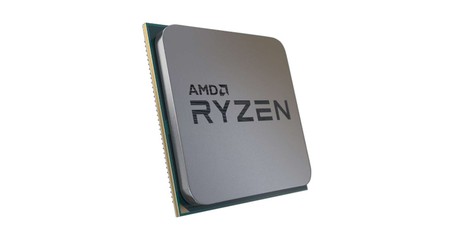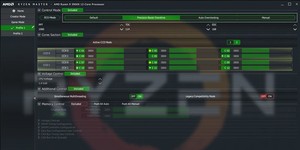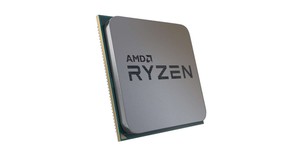
AMD has, as promised, released more details about changes to the boost clocks of its third-generation Ryzen processor family, to arrive in an AGESA update provided to motherboard partners earlier this week.
A key feature of modern processors, turbo or boost clocks allow the CPU to increase its operating frequency above the normal maximum. Boost clocks are typically split into two categories: All-core boost is the speed achievable when all of the processor's physical cores are running flat out, while any-core boost can be achieved by a single core running a single thread. In both cases, the boost core should be higher than the stock clock but may be constrained by the type of workload, temperature, or other conditions.
AMD's third-generation Ryzen processor family, however, has a problem. A vaguely-scientific survey conducted by noted overclocker Roman 'der8auer' Hartung discovered that only a minority of processors ever reached their promised boost clocks - as few as single-digit percentages at the higher end of the range.
Following the release of Hartung's video, AMD responded that it had found a flaw in the firmware that was artificially restricting boost clocks. At the time, the company pledged to 'provide an update on September 10' with information about the flaw and when the firmware update to fix it would be available - and, true to its word, it has now made that very update.
'Our analysis indicates that the processor boost algorithm was affected by an issue that could cause target frequencies to be lower than expected,' AMD's Robert Hallock explains in a community update. 'This has been resolved. We’ve also been exploring other opportunities to optimise performance, which can further enhance the frequency. These changes are now being implemented in flashable BIOSes from our motherboard partners. Across the stack of 3rd Gen Ryzen Processors, our internal testing shows that these changes can add approximately 25-50MHz to the current boost frequencies under various workloads.'
The company has, however, quietly taken issue to Hartung's chosen workload for boost clock testing - and warns that even with the updated firmware users may still not see the advertised boost clock speeds when attempting to replicate Hartung's results. 'Following the installation of the latest BIOS update, a consumer running a bursty, single threaded application on a PC with the latest software updates and adequate voltage and thermal headroom should see the maximum boost frequency of their processor. PCMark 10 is a good proxy for a user to test the maximum boost frequency of the processor in their system,' Hallock explains. 'It is fully expected that if users run a workload like Cinebench, which runs for an extended period of time, the operating frequencies may be lower than maximum throughout the run.'
At the same time, Hallock has announced that the firmware update - known as AGESA, the AMD Generic Encapsulated Software Architecture - will include an improved 'calmer idle' function designed to smooth out Ryzen's tendency to spike to high frequencies and voltages for extremely short workloads. 'The changes primarily arrive in the form of an "activity filter" that empowers the CPU boost algorithm itself to disregard intermittent OS and application background noise,' Hallock explains. 'Example test cases might include: video playback, game launchers, monitoring utilities, and peripheral utilities. These cases tend to make regular requests for a higher boost state, but their intermittent nature would fall below the threshold of the activity filter. Net-net, we expect you’ll see lower desktop voltages, around 1.2V, for the core(s) actively handling such tasks. We believe this solution will be even more effective than the July changes for an even wider range of applications.'
Finally, AMD has pledged to launch a new software development kit which will 'allow anyone to build a public monitoring utility that can reliably report a range of key processor metrics in a consistent manner.' The tool, due to release on September 30th, will include over 30 application programming interface (API) calls pulling information including voltages and clocks for a range of components, peak and average core voltage, operating temperature, current and power limits for the motherboard socket and voltage regulator modules (VRMs), peak processor speed during a measuring period, and effective frequency taking into account sleep states.
Hallock has confirmed that the firmware update, dubbed AGESA 1003ABBA, has already been provided to motherboard partners; it will be up to these companies to fold it into their own UEFI updates and provide them as downloads for each motherboard model they offer - something Hallock says could take up to three weeks. Early beta builds, however, have already begun to leak, suggesting that some board makers may be able to get their updates out a little earlier.
AMD has also released an updated Ryzen Master utility, available now, which includes the Average Core Voltage reading from the upcoming monitoring SDK.

MSI MPG Velox 100R Chassis Review
October 14 2021 | 15:04








Want to comment? Please log in.